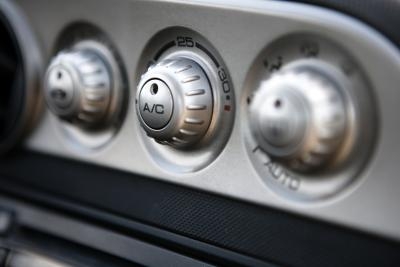
If your vehicle stops blowing cold air, the most likely cause is refrigerant. The air conditioner on your vehicle works by storing compressed gas that absorbs heat. When you turn on your air conditioner, this gas flows through cooling hoses before being decompressed. The cold air from the cooling process then flows through your air vents. However, a leak in the system can cause your vehicle to lose refrigerant. The easiest way to recharge the refrigerant is to take your vehicle to a mechanic; however, if you want to save the money, try recharging your air conditioning unit yourself.
Purchase the appropriate refrigerant for your vehicle. Most likely, if your vehicle was manufactured before 1995, it requires R12 Freon. If your vehicle was manufactured after 1995, it requires R134 refrigerant. Please note, that if your vehicle requires the use of R12 Freon, a special license is required to purchase and use R12 Freon, and it is recommended you allow a professional mechanic to charge your vehicle.
Attach the pressure gauge and the service hose to the Freon refrigerant can. Test the connection between the service hose and the refrigerant can. The seal should be tight without any holes. Carefully open the valve on the refrigerant can to release a small amount of refrigerant. This should blow out any air in the service hose so that it does not end up in your compressor.
Take the opposite end of the service hose and connect it to the low-side pressure fitting on your vehicle. The low-side pressure fitting should be located near the vehicle's compressor underneath the hood. You should be able to identify the low pressure fitting as a 13 mm pipe. You will have to remove the cap from the pressure fitting pipe. Again, make sure the seal between the pressure fitting and the service hose is tight.
Get inside your vehicle and turn your engine on. Turn your air conditioner on and set it to its maximum settings.
Go back to the hood area and grasp the can of refrigerant. Hold the refrigerant upright while you open the valve on the refrigerant can. Open the valve fully and allow the refrigerant to flow into your vehicle's compressor.
Allow the refrigerant to flow until the pressure gauge reaches the recommended range. The recommended range for most vehicles is 25 psi to 45 psi. Do not allow the pressure gauge to reach higher than 45 psi as this can cause an explosion.
Turn off your air conditioner and your engine. Disconnect the service hose from your pressure fitting. Replace the cap on the pressure fitting. Turn your engine back on and allow your air conditioner to run for a few minutes.